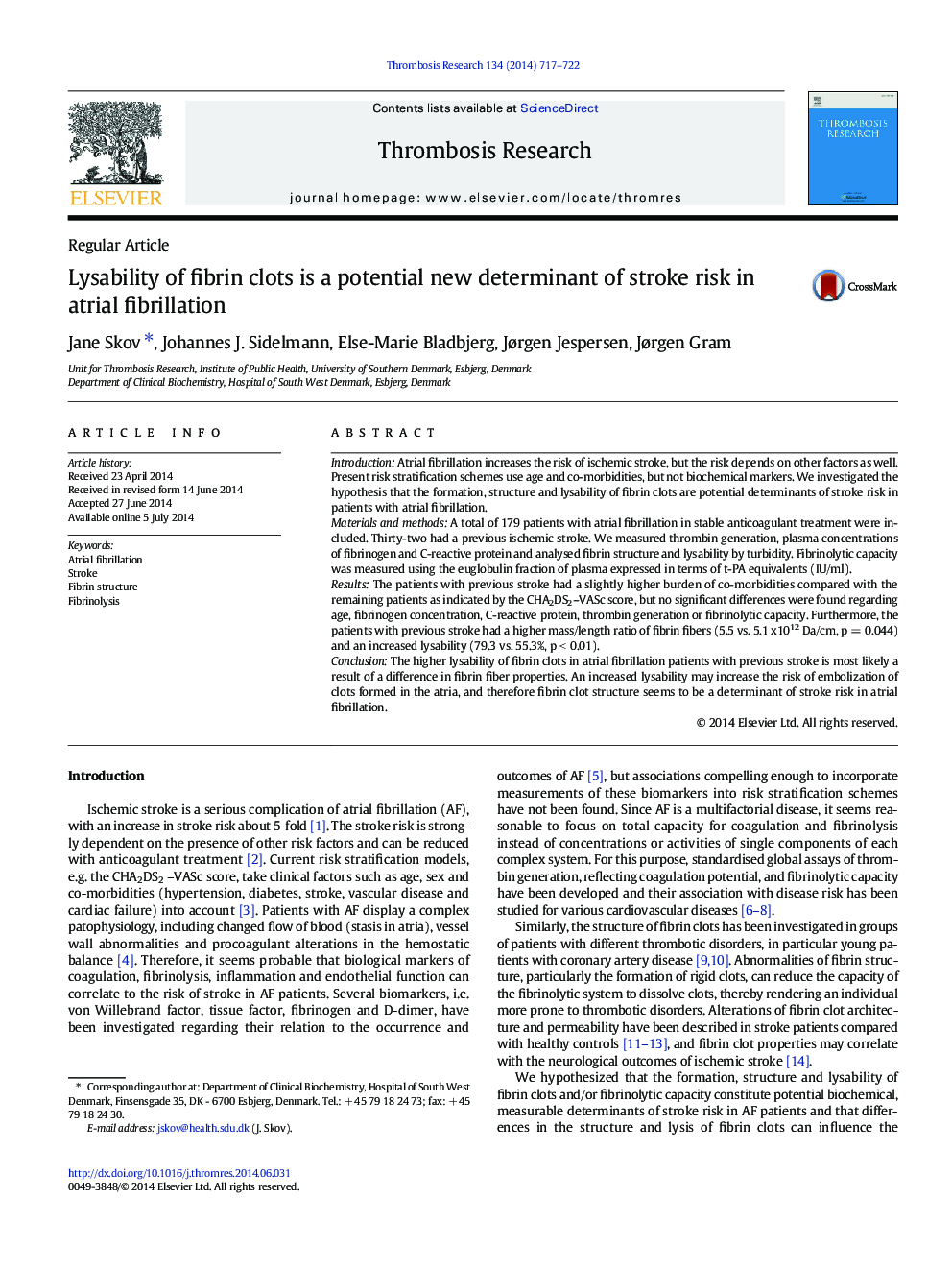| کد مقاله | کد نشریه | سال انتشار | مقاله انگلیسی | نسخه تمام متن |
|---|---|---|---|---|
| 6002044 | 1182963 | 2014 | 6 صفحه PDF | دانلود رایگان |
- We measured thrombin generation, fibrin structure and lysability in 179 atrial fibrillation patients with and without previous stroke
- Patients with previous stroke had similar thrombin generation and fibrinogen concentration, but different fibrin fiber properties (higher mass/length ratio) and higher lysability of fibrin clots than patients without previous stroke.
- An increase in lysability may increase the risk of embolization of atrial thrombi
- Lysability of fibrin clots is a potential new determinant of stroke risk in atrial fibrillation
IntroductionAtrial fibrillation increases the risk of ischemic stroke, but the risk depends on other factors as well. Present risk stratification schemes use age and co-morbidities, but not biochemical markers. We investigated the hypothesis that the formation, structure and lysability of fibrin clots are potential determinants of stroke risk in patients with atrial fibrillation.Materials and methodsA total of 179 patients with atrial fibrillation in stable anticoagulant treatment were included. Thirty-two had a previous ischemic stroke. We measured thrombin generation, plasma concentrations of fibrinogen and C-reactive protein and analysed fibrin structure and lysability by turbidity. Fibrinolytic capacity was measured using the euglobulin fraction of plasma expressed in terms of t-PA equivalents (IU/ml).ResultsThe patients with previous stroke had a slightly higher burden of co-morbidities compared with the remaining patients as indicated by the CHA2DS2-VASc score, but no significant differences were found regarding age, fibrinogen concentration, C-reactive protein, thrombin generation or fibrinolytic capacity. Furthermore, the patients with previous stroke had a higher mass/length ratio of fibrin fibers (5.5 vs. 5.1 x1012 Da/cm, p = 0.044) and an increased lysability (79.3 vs. 55.3%, p < 0.01).ConclusionThe higher lysability of fibrin clots in atrial fibrillation patients with previous stroke is most likely a result of a difference in fibrin fiber properties. An increased lysability may increase the risk of embolization of clots formed in the atria, and therefore fibrin clot structure seems to be a determinant of stroke risk in atrial fibrillation.
Journal: Thrombosis Research - Volume 134, Issue 3, September 2014, Pages 717-722
